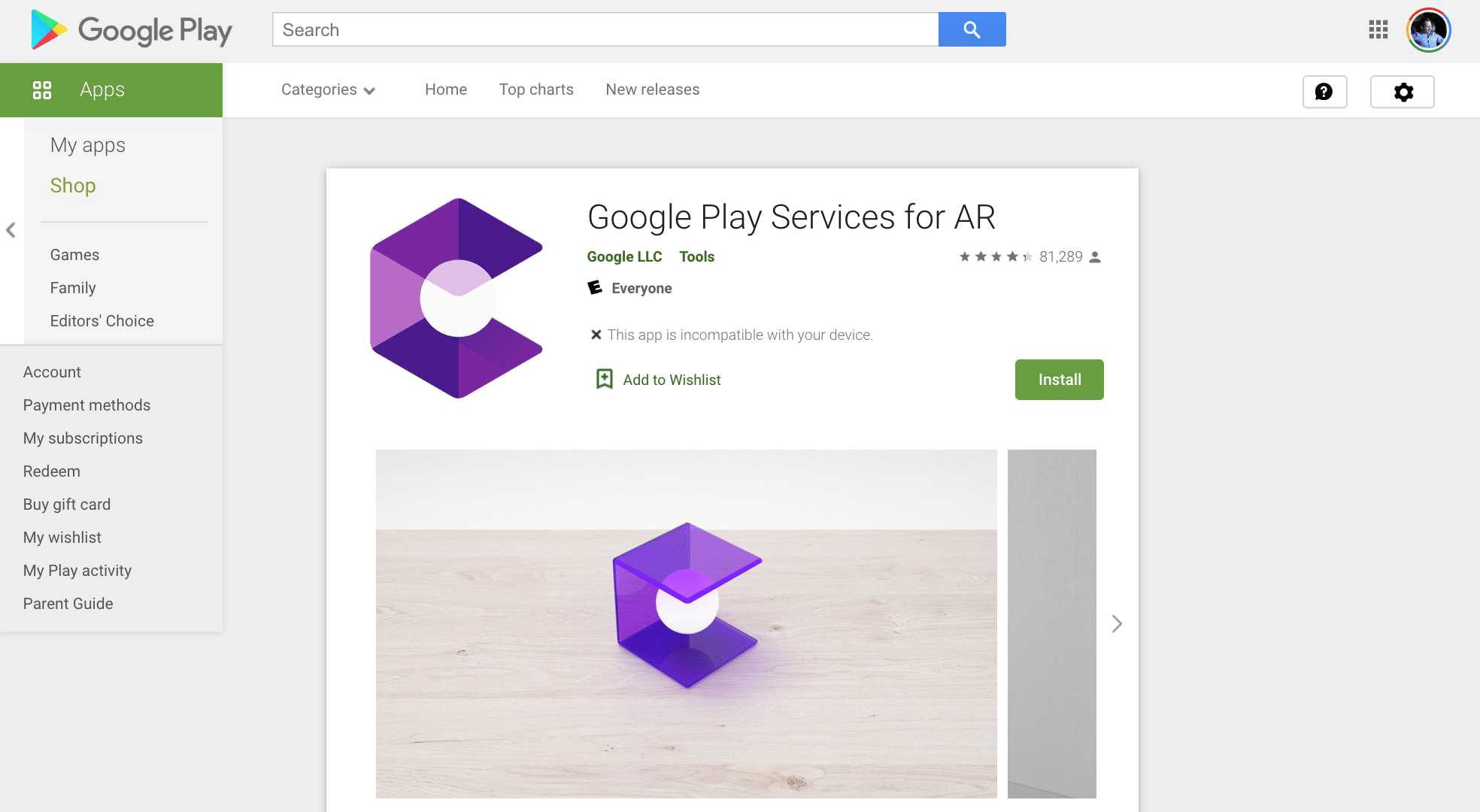After launching in 2017, Google’s ARCore has been relatively quiet. “Relatively” is the key term, as it continues to make progress in AR search results and other areas (more on that in a bit). But along with ARkit, it has lost some mindshare to ramping platforms like Lens Studio.
It’s now evident that its low profile — at least from a media and marketing standpoint — doesn’t reflect its growth over the past year. Google reports this week that ARCore has surpassed one billion installs. This refers to the Google Play Services for AR app in Google’s Play Store.
As quick background for those unfamiliar, ARCore is Google’s AR developer platform — the counterpart to Apple’s ARkit — as well as its consumer-facing vessel. To experience ARCore apps on an Android device, you must first have the Google Play Services for AR app.
This step allows Android devices to access ARCore libraries and tune the experience to a given smartphone. ARkit doesn’t require this step, as Apple owns the hardware and software stacks so it can ensure built-in sensor fusion — going back to the iPhone 6s — and ship with ARkit libraries.

Tres Commas
To further define the one-billion achievement, it doesn’t necessarily mean one billion AR users on Android. If all one-billion downloads were actively initiated by users, that might be the case. But the figure also tallies devices that are Google-certified to ship with ARCore pre-installed.
That said, some portion of the one-billion represents AR users. We can use the number of reviews in the Play Store — 301,000 as of this writing — as a proxy. For example, if one were to assume one percent of Android AR app users left a review, the active base would be 30 million.
That’s just a thought exercise of course. Play with the formula. Meanwhile, the one-billion figure is meaningful on its own, as it defines the ARCore’s addressable market. This figure can help inform developers’ strategies around where to place their chips and apply scarce resources.
That equation should also factor in Web AR, such as 3D search results. As explored below, these AR activations require ARCore on Android devices but are also compatible with ARkit devices. Google wants maximum reach for the benefits that AR can bring its core search business.

All Roads Lead to Rome
With that in mind, Google’s AR reach extends beyond the one-billion figure. It applies ARCore to web-delivered AR, as noted above. Google lives on the web after all. This currently plays out in several ways including Google Lens, Live View and object visualization in search results.
To explain the latter a bit more, this is when AR activations appear in search results, prompting the user to view in 3D (or AR on mobile). This is Google’s way to accelerate AR by incubating it in the web’s most traveled destinations: Google SERPs. That’s where exposure can really scale.
These efforts have ramped up lately, including the recent expansion of 3D animal breeds in search results, as well as cosmetics try-ons. Google also released a Baby-Yoda AR model last week, which was a fairly seamless SERP activation when we tried it (see the UX above).
Another component that factors in is Google Swirl. If Baby Yoda AR search results are Google’s organic play, Swirl is its AdWords. These ad units utilize the same technology to let advertisers display 3D models such as product try-ons. With Google, all roads lead back to paid search.
Back to the one-billion milestone, it simply means that more phones will be able to play along. We’ll keep a close eye on this.

